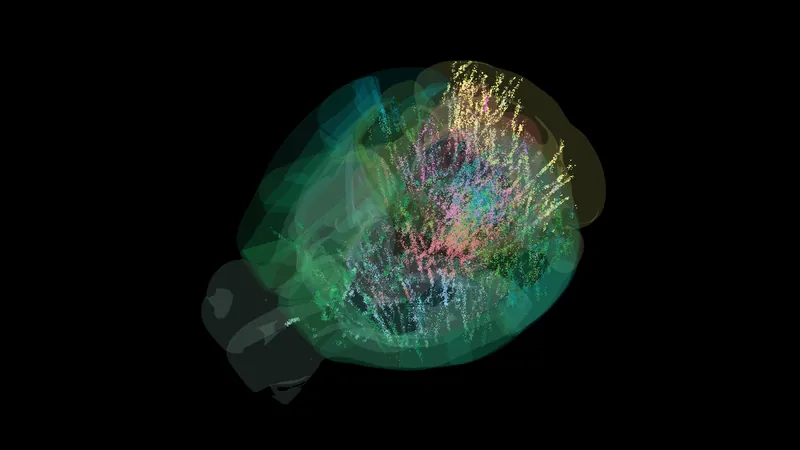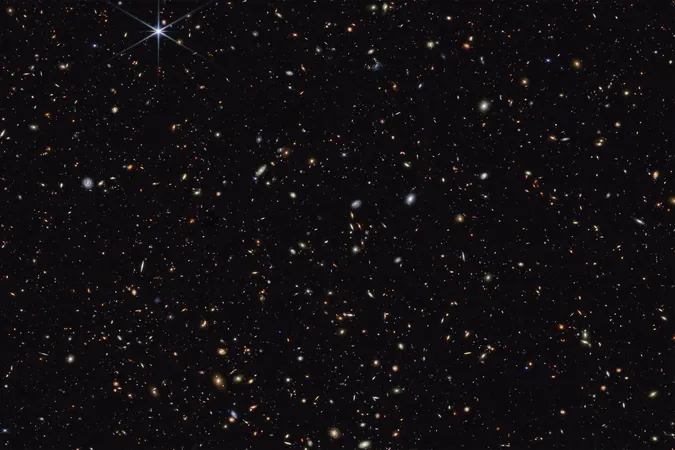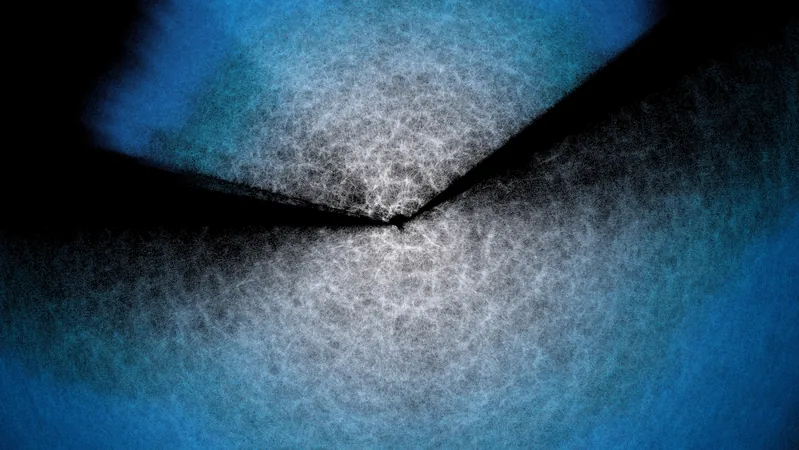
Revolutionary Brain Map of Decision-Making Unveiled in Mice
2025-09-03
Author: Wei
A Groundbreaking Discovery in Neuroscience
In an extraordinary leap for neuroscience, researchers have charted the first-ever brain-wide map of decision-making at single-cell resolution using mice. This groundbreaking study illustrates how the brain's vast network works together to make decisions, a feat that has eluded scientists for decades.
Moving Beyond Traditional Methods
Historically, neuroscience has focused on isolated clusters of cells, often overlooking the rich tapestry of interconnections throughout the brain. Dr. Ilana Witten of Princeton University notes, "We've come to realize that multiple brain regions contribute to decision-making, rather than just one or two." This study seeks to unveil that complexity.
A Global Collaboration Takes Shape
Working with the International Brain Laboratory, a consortium of 22 labs across Europe and the U.S., Witten's team standardized a method to track neural activity during decision-making tasks. Their findings were documented in two papers published in the prestigious journal *Nature*,
Mapping a Mouse Brain: A Herculean Task
Mapping an entire brain in action is no small feat, especially in mice. Dr. Alejandro Pan Vazquez, who contributed to the study, shared, "This had never been achieved before. Coordinating data from such a vast collaboration was revolutionary for neuroscience."
Innovative Experimental Design
Mice participated in a simple yet clever task involving tiny steering wheels. By maneuvering these wheels, they could move a black-and-white striped circle on a screen to earn a reward of sugar water. The experiment tested their decision-making skills based on expectations and prior experiences.
The Surprising Reach of Decision-Making
The resulting map has unveiled that decision-making involves brain regions previously thought unrelated to cognition, highlighting the complexity of neural processes. Dr. Witten emphasized, "Decision-making is broadly distributed throughout the brain, challenging our previous understanding of its mechanisms."
A Valuable Resource for the Future
This unique dataset not only charts the brain's activity but also serves as a resource for further research, inviting other scientists to explore and derive new insights into decision-making.
The Potential of Collaborative Science
The global effort spanning 22 labs demonstrates the power of collaborative science, revealing that together, researchers can venture into untapped territories. As Dr. Tatiana Engel aptly stated, "This brain-wide map is just the beginning, not the grand finale." This initiative ignites the possibility for new discoveries in the fascinating world of neuroscience.



 Brasil (PT)
Brasil (PT)
 Canada (EN)
Canada (EN)
 Chile (ES)
Chile (ES)
 Česko (CS)
Česko (CS)
 대한민국 (KO)
대한민국 (KO)
 España (ES)
España (ES)
 France (FR)
France (FR)
 Hong Kong (EN)
Hong Kong (EN)
 Italia (IT)
Italia (IT)
 日本 (JA)
日本 (JA)
 Magyarország (HU)
Magyarország (HU)
 Norge (NO)
Norge (NO)
 Polska (PL)
Polska (PL)
 Schweiz (DE)
Schweiz (DE)
 Singapore (EN)
Singapore (EN)
 Sverige (SV)
Sverige (SV)
 Suomi (FI)
Suomi (FI)
 Türkiye (TR)
Türkiye (TR)
 الإمارات العربية المتحدة (AR)
الإمارات العربية المتحدة (AR)